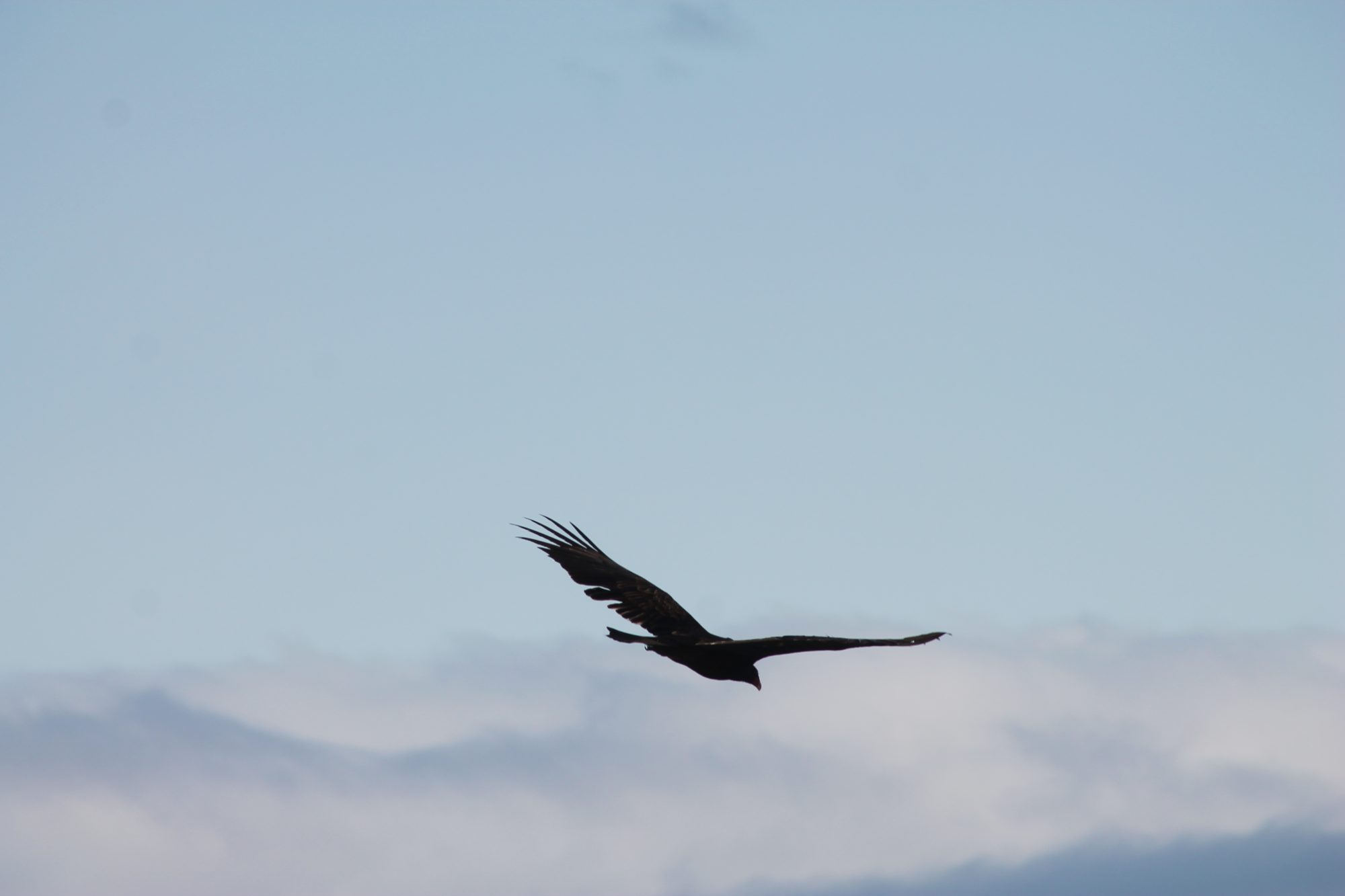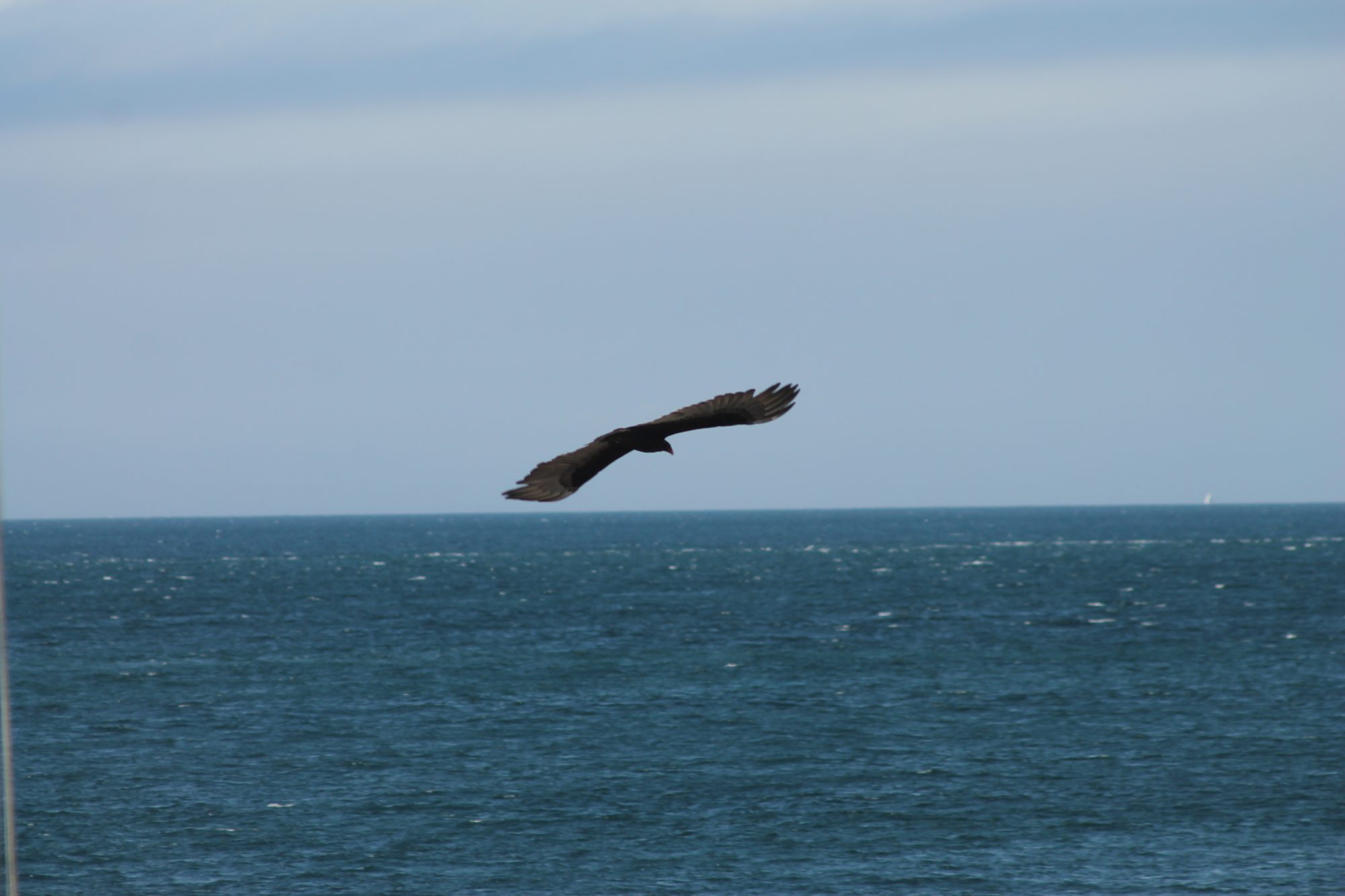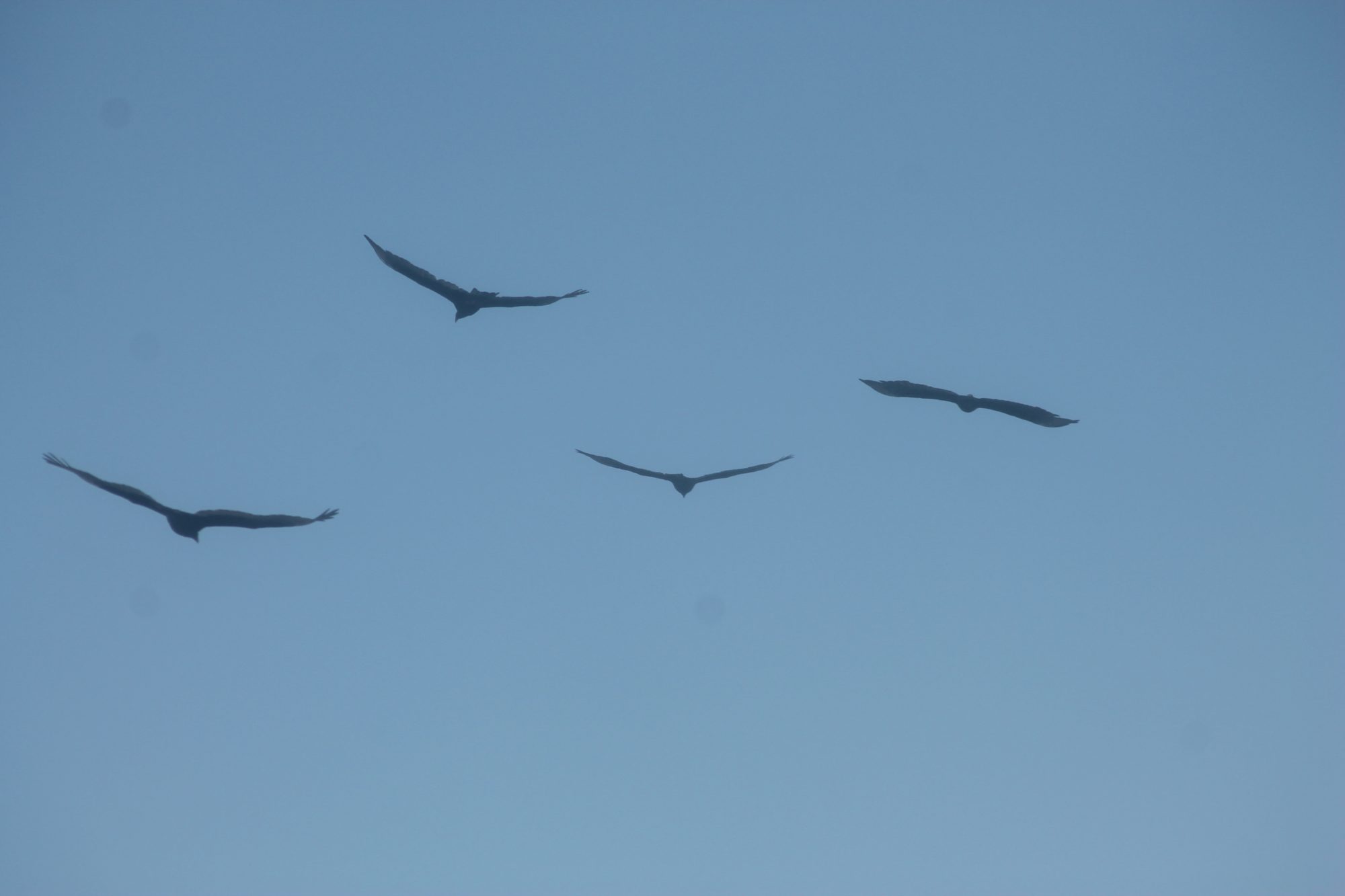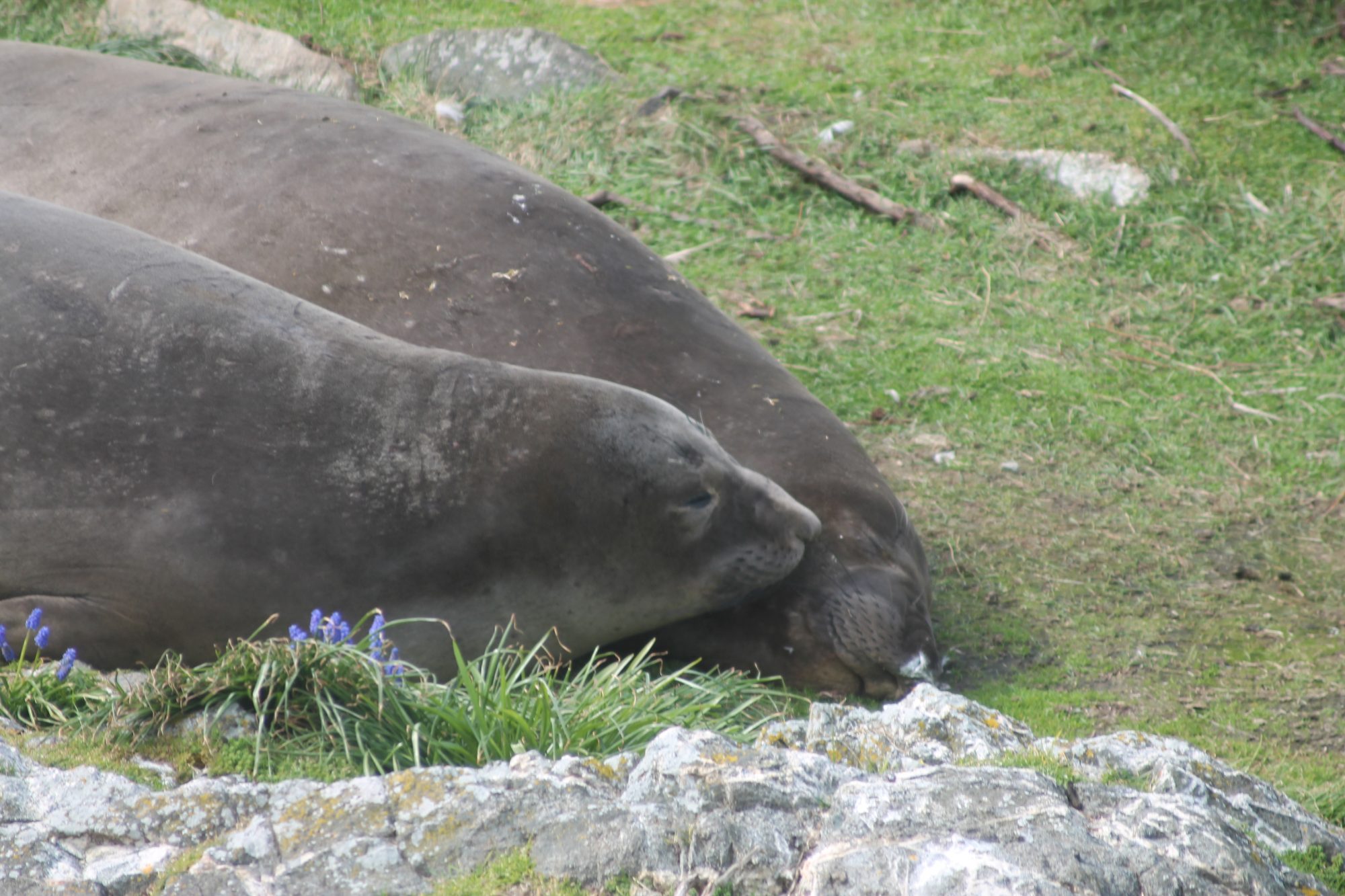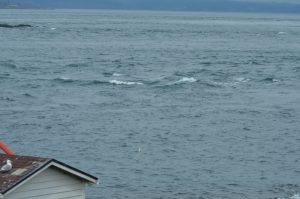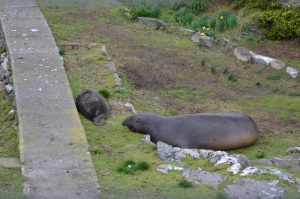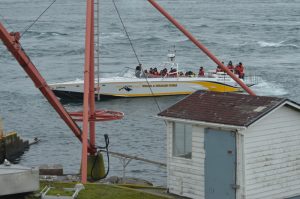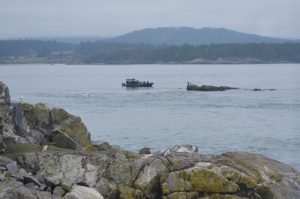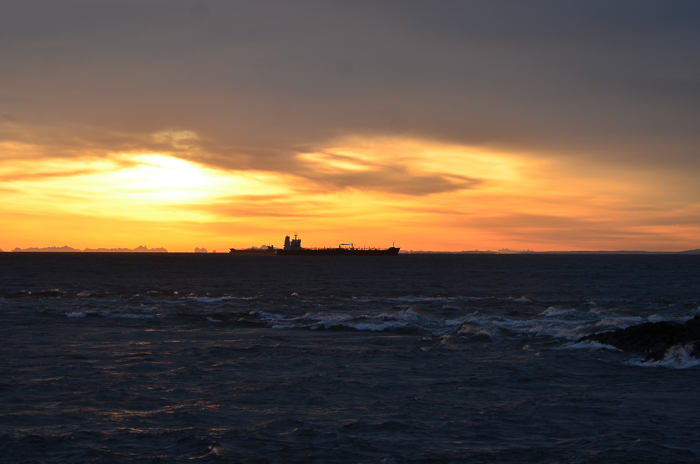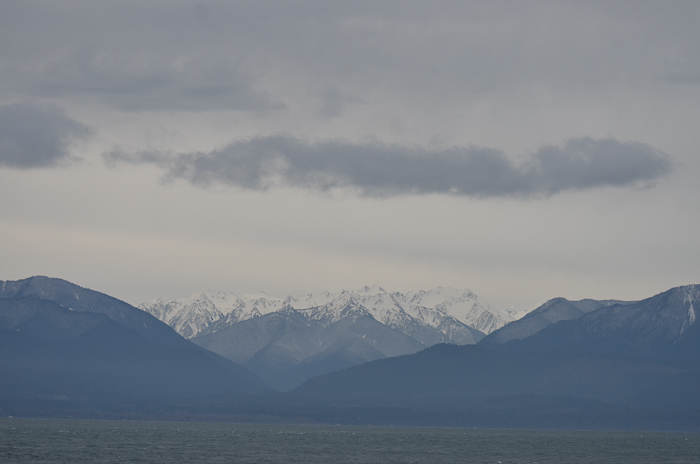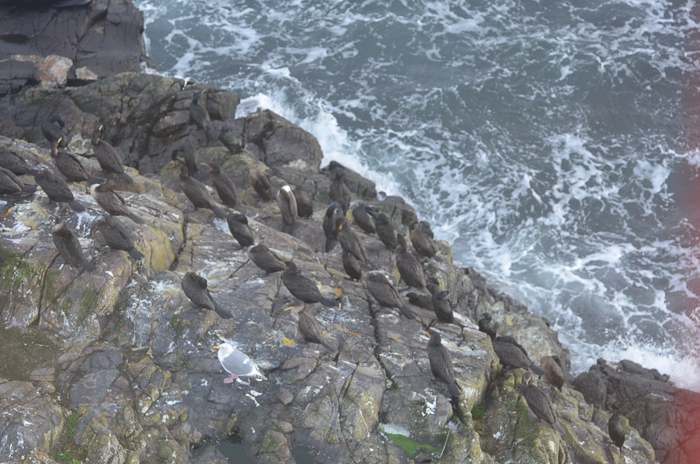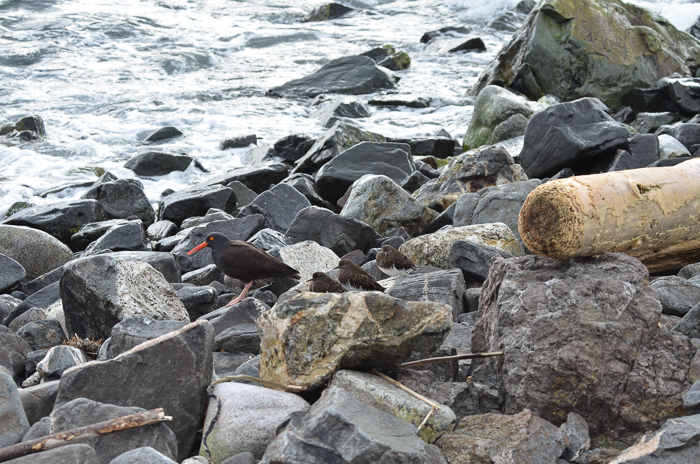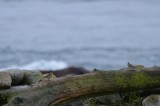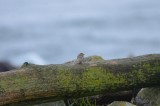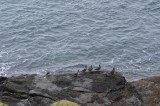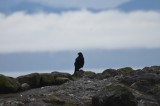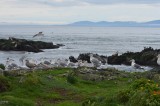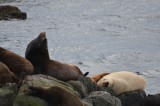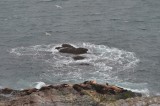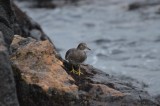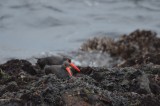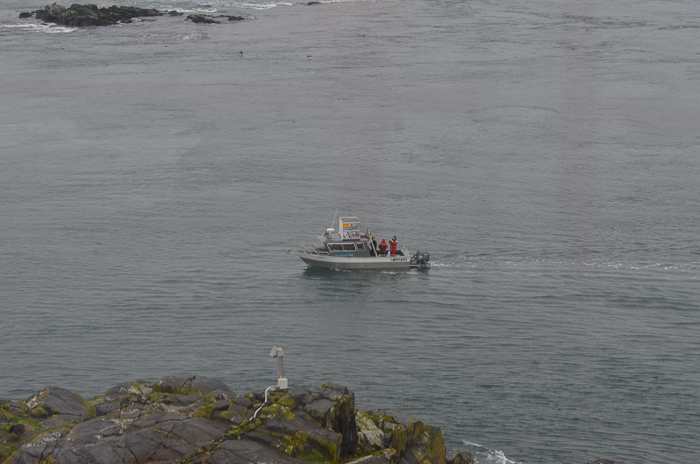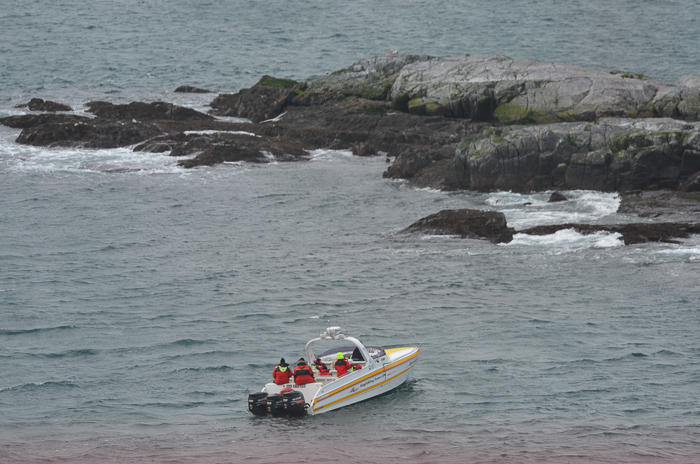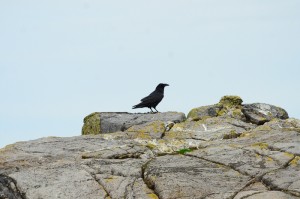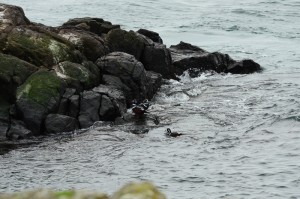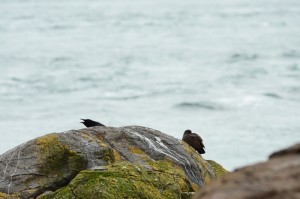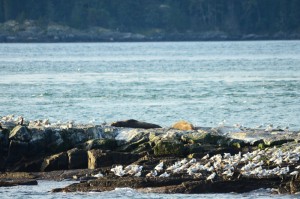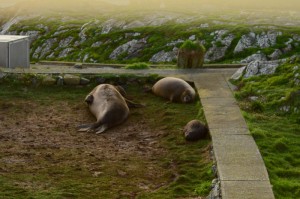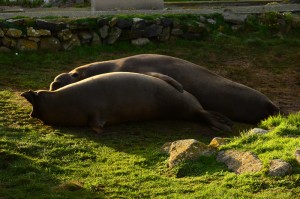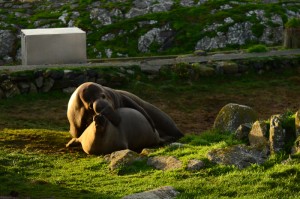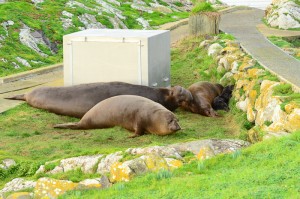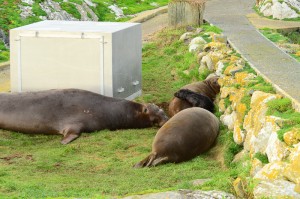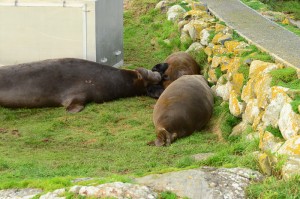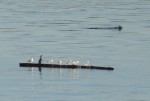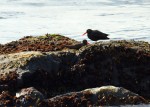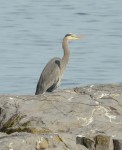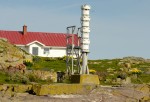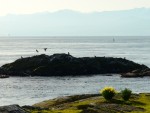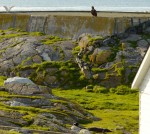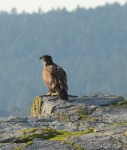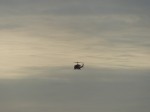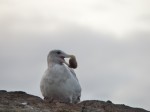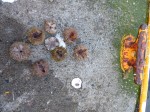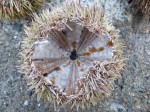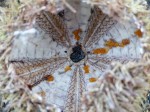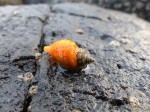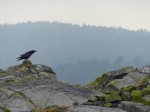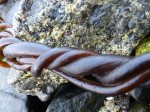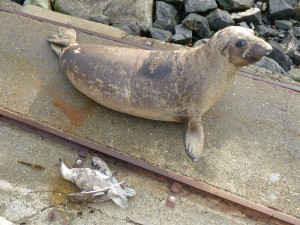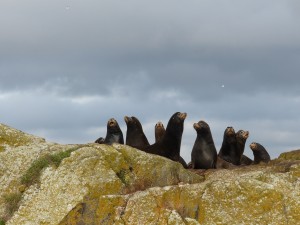It was a dramatic day weather-wise with near-gale westerlies and a heavy downpour that dropped almost one centimetre of much needed rain. Just before the sun went down there were intense rainbows. The barometer continued its slide but a nice sunset and the westerly wind warning, mean sunshine for tomorrow.
With no killer whales in sight, the whale watching boat numbers dropped to three. There were no recreational boaters fishing in the closed Conservation Area today. There were some big blasts from the military site today late morning and early afternoon. They had a vessel standing off to the northwest of the reserve talking to boaters. Although there were no visitors ashore, Second Nature came within a stone’s throw of the jetty and I waved to Courtney and the Pearson College students aboard.
This morning when I got up there were no sea lions on the jetty for the first time so I will continue my territorial patrols. I scanned for brands/tags from the top of the tower again today, and added more to the growing list. Eventually I will put a finders’ curve together to see if I am approaching the asymptote.
I was a bit grossed out to see the GW Gulls and Black Turnstones foraging in the Sea Lion messes this morning. I wonder what their parasite load is mmm? At least one of the sea lions had evidently been eating krill.
All but one of the young gulls are flying now and it was fun to watch them ‘getting a flying lesson’ from the raven this morning. Okay, I know that is way too anthropomorphic. They were all following raven who seemed to be playing the trickster, (maybe hoping they would crash for breakfast). Ravens are so good at doing aerial flips and such but young gulls are still a bit wobbly. There are still two Pigeon Guillemots carrying food to nest sites. they bring a variety of benthic fish: so far I have seen little flatfish, large gunnels a variety of sculpins and maybe a prickleback.
Other than the routine chores, more window cleaning and moving heavy concrete blocks today, I did some trouble-shooting on the computer and deleted over 11,000 items from the trash which sped things up. I started to read the camera manual with camera in hand. Yesterday’s passing Killer Whales inspired me to learn how to use the camera with the big lens.

